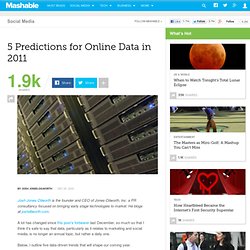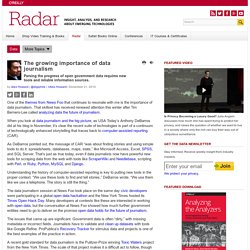

How to become a data visualization ninja with 3 free tools for non-programmers. We noticed many times between the lines of this blog how data visualization is in the hype and how this trend is growing and growing.

That’s good news guys! It’s fun and it’s … success! But as more and more people join this wild bunch we have to take care of those who are not as skilled as we are yet. There are many people out there who love data visualization but they think they are out of this business because they are not able to code. I personally think that this is a problem and that we have to be as inclusive as we can. As data visualization develops we can expect to have people developing tools that are more accessible and easier to use also for non-programmers.
By the way, if you are one of those wannabe non-programmer-data-enthusiast I have a good news for you: the future is here! Data Visualization is 80% data 20% visualization I don’t think I will find anyone arguing against this sentence. And there is also a subtler issue here. So here it is. The Ninja’s Toolbox Conclusion. Konstanz Information Miner. 5 Predictions for Online Data In 2011. Josh Jones-Dilworth is the founder and CEO of Jones-Dilworth, Inc. a PR consultancy focused on bringing early stage technologies to market.

He blogs at joshdilworth.com. A lot has changed since this post’s forbearer last December, so much so that I think it’s safe to say that data, particularly as it relates to marketing and social media, is no longer an annual topic, but rather a daily one. Below, I outline five data-driven trends that will shape our coming year. 1. “Data scientist” Is the New Community Manager In 2011, data science job openings will see a rise in numbers similar to the gaggle of community management and social media marketing gigs that materialized out of the ether nearly three years ago. Now, community managers will not become data scientists per se — true data science involves a heavy dose of machine learning, code skills, math chops and deep domain expertise. 2. Companies like Backupify speak to the same future. Who will be the eTrade or the Google Health of my data? The growing importance of data journalism. One of the themes from News Foo that continues to resonate with me is the importance of data journalism.

That skillset has received renewed attention this winter after Tim Berners-Lee called analyzing data the future of journalism. When you look at data journalism and the big picture, as USA Today’s Anthony DeBarros did at his blog in November, it’s clear the recent suite of technologies is part of a continuum of technologically enhanced storytelling that traces back to computer-assisted reporting (CAR). As DeBarros pointed out, the message of CAR “was about finding stories and using simple tools to do it: spreadsheets, databases, maps, stats,” like Microsoft Access, Excel, SPSS, and SQL Server. That’s just as true today, even if data journalists now have powerful new tools for scraping data from the web with tools like ScraperWiki and Needlebase, scripting with Perl, or Ruby, Python, MySQL and Django.
The issues that came up are significant. Related: Free Data Visualization Software.
Infographie. Interactive Data Vizualization. Introduction to Django - O'Reilly Media. Needlebase. Welcome. La visualisation de données pour le Web. Use Flare Visualization Toolkit to Build Interactive Viz for the Web. Tom from Stamen Design and Hadley from the GGobi group kindly pointed me to the recently ported Flare visualization toolkit.

Developed by Berkeley's Jeffrey Heer, Flare looks extremely useful for anyone who is interested in developing interactive visualizations (e.g. time series, stacked bar, pie charts, graph) for the Web that run in the Adobe Flash player. There's a pretty good tutorial that I, as a beginner, found straightforward. I ran into some problems when I was trying to "import a library into another project," but per Jeffrey's suggestion, I upgraded to Adobe Flex 3 beta (currently a free download). That cured my problems. Adobe Flex is apparently still a little rough around the edges. I'm currently going through the demos to gain a better understanding of both Flare and Actionscript, and it looks very promising.
Check out some screenshots from the Flare demo reel after the jump.